Toshiba Q300 Pro 512GB MLC SSD Review
Toshiba recently launched two new SSDs for the entry-level and mainstream markets. Today, we look at the top-tier MLC-based Q300 Pro and find that it could be a serious contender in the market.
Why you can trust Tom's Hardware
Four-Corner Testing
Sequential Read
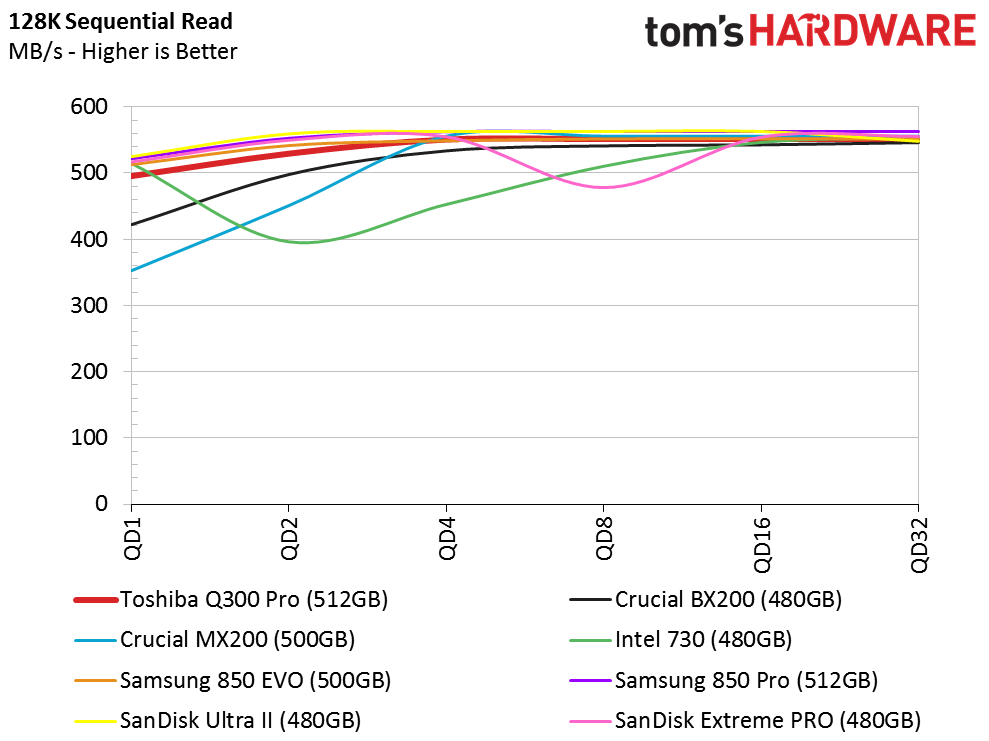

All of the drives on this chart deliver high sequential read performance, even those armed with TLC flash. Toshiba's Q300 Pro reads at nearly 500 MB/s with a queue depth of one. There's not much room to scale from there, if only because of the SATA interface's 6 Gb/s limit.
Sequential Write
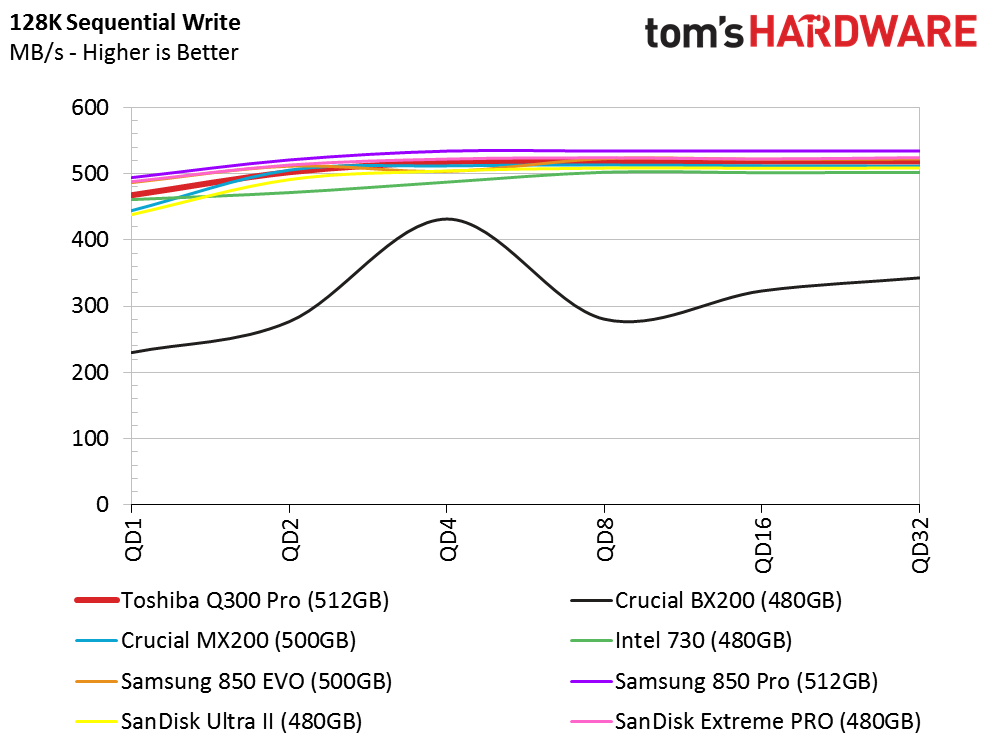
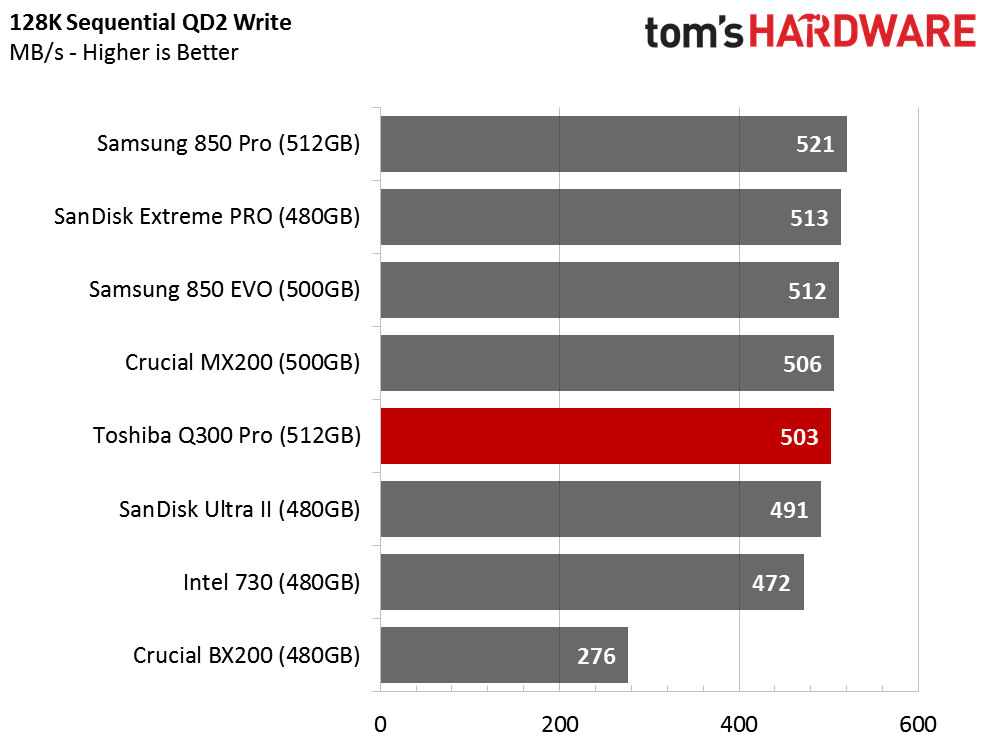
Writing quickly is more difficult for modern SSDs with large 128Gb memory dies. High-capacity models with 512GB or more of flash don't have the same problems as smaller drives; the greater number of dies composing them create more parallelization for absorbing the incoming data.
Even without a DRAM buffer, the Q300 Pro reports more than 500 MB/s at a queue depth of two. It trails some of the competition at a queue depth of one, though.
Random Read
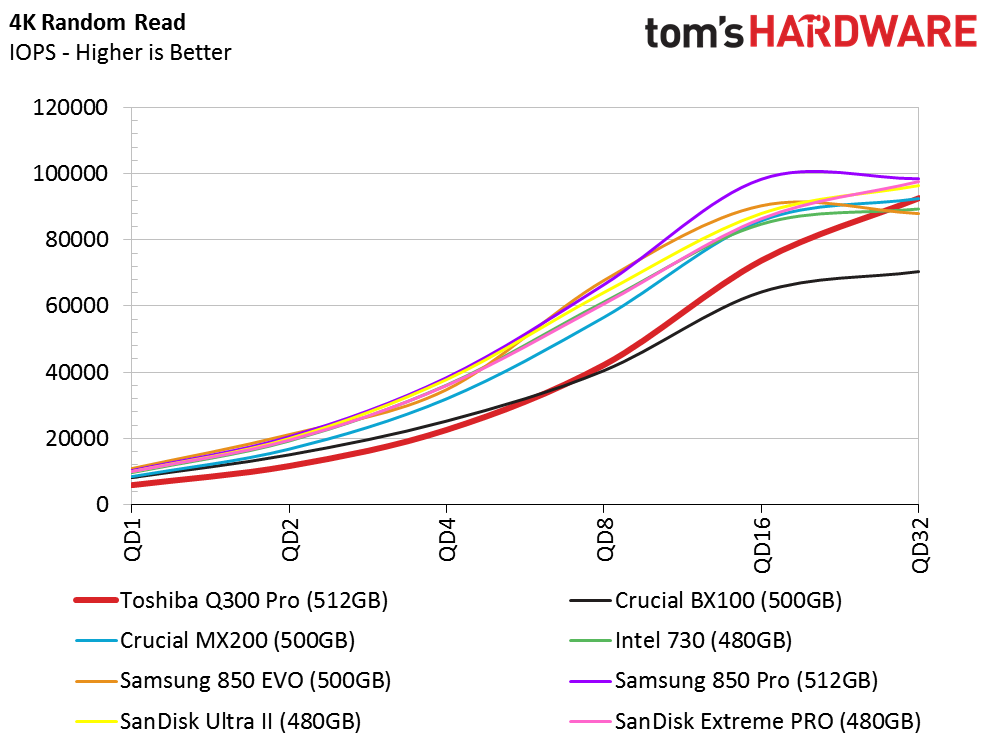

Random performance is where the missing DRAM affects performance. At a queue depth of one (the most important measurement point for client SSDs), Toshiba's 512GB Q300 Pro trails every other comparison drive, including two with TLC flash. Most enthusiasts don't use all of the random read throughput available to them, but the more you can leave in reserve, the better your latency will be in most cases. The Q300 Pro claws its way up the charts at higher queue depths, but continues to trail much of its competition through QD32.
Random Write

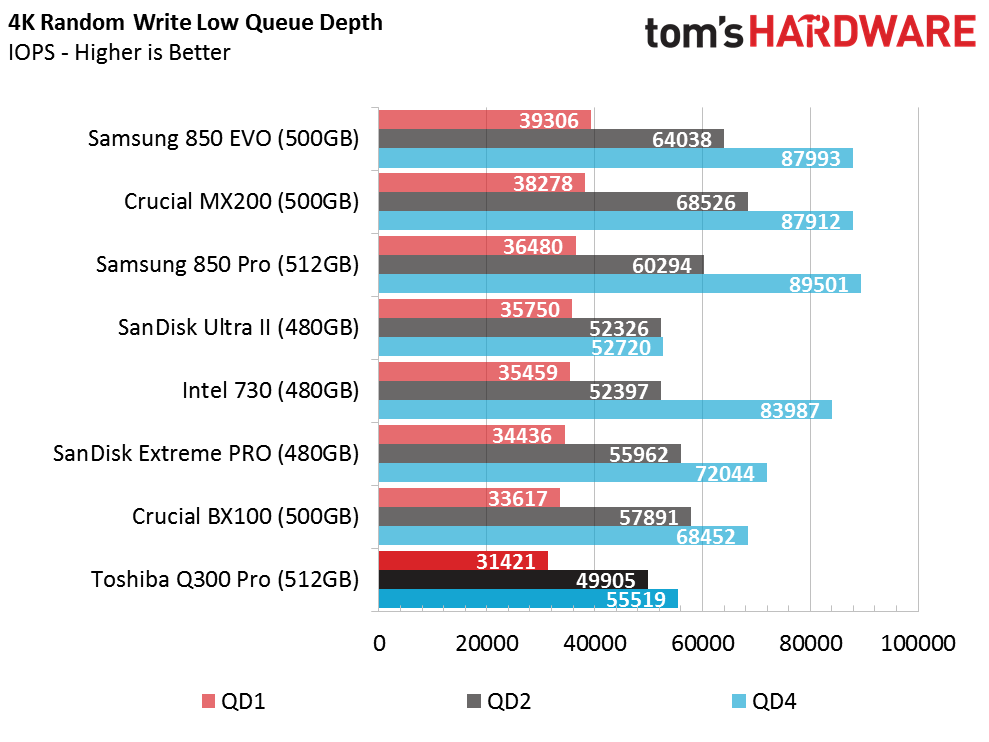
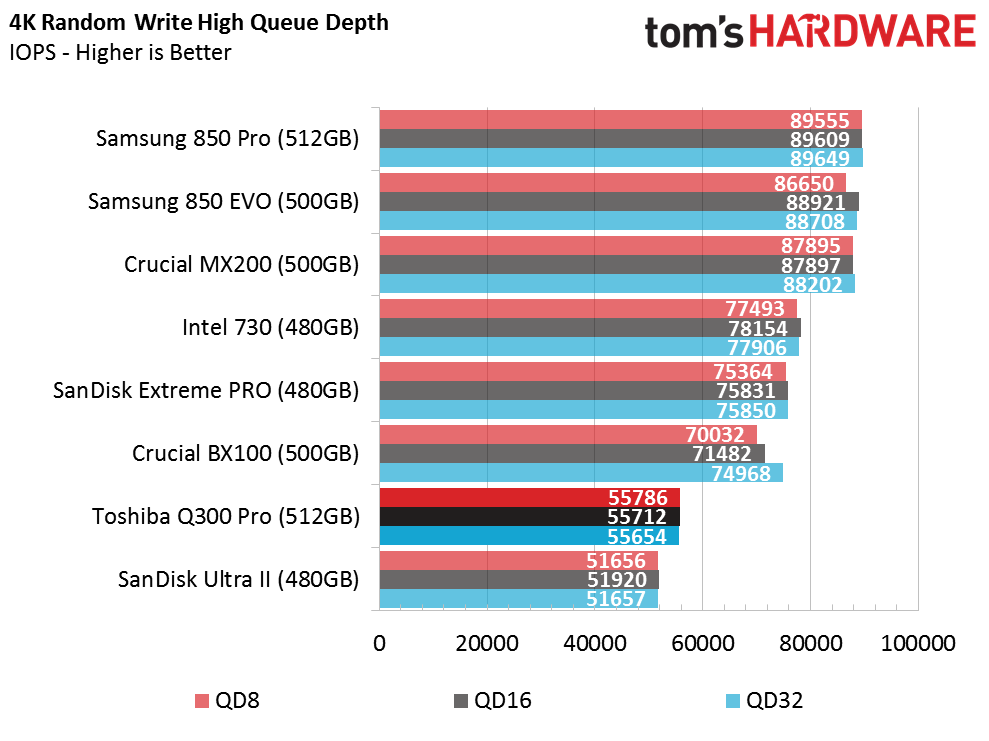
We measured random write performance much lower than most of the field throughout the queue depth range, and the lack of a DRAM buffer is to blame.
Get Tom's Hardware's best news and in-depth reviews, straight to your inbox.

Chris Ramseyer was a senior contributing editor for Tom's Hardware. He tested and reviewed consumer storage.
-
apache_lives When iI think Toshiba SSDs i think OCZ. OCZ is rubbish, do i trust this Toshiba product? NOReply -
stirrupchup Thanks for the review.Reply
I ended up skipping this drive and going for another one, and having read this review, I'm kinda glad I skipped it. Seems to be nothing special, and not worth the price. -
mortsmi7 "In this market, to sell products you need to either have the fastest SSD or offer the best value."Reply
I guess I'm the only one that prefers reliability over either of those factors, especially for a system drive. All SSD's fall under the fast category, that there is good enough for me. And as far quality is concerned, you get what you pay for to a certain extent. -
kalmquist The 256GB Q300 Pro is currently selling for $100, which is less than half the price of the 512GB unit reviewed here. That doesn't make any sense if both drives use the same controller and only differ in the abount of flash memory installed.Reply
-
3ogdy apache_lives. That was EXACTLY may thought. And yeah, yeah, yeah. "Enough with the FUD already...", but the stuff is there. The thing is, Toshiba actually deserves a chance. If problems arise, it's Toshiba's customer support you have to deal with, not OCZ. Moreover, this is a Toshiba product entirely, I believe, which should be at the other end of the spectrum when compared to utter crappy products from OCZ. People over at OCZ should look up "reliability" in a dictionary, ffs.Reply -
ssdpro +1 to OCZ being awful. I wouldn't trust Toshiba if they tolerate OCZ. I mean come on, their ARC 100 and Radeon drives had 0 day defects with ass-bottom reviews. Their Trion drives get 2 or 3 stars out of 5 at Amazon and Newegg. Ben from OCZ support responds to people with form responses that are ridiculous. Customer - "Drive died after 3 weeks, don't purchase" OCZ - "We value your purchase. Did you check the sata cable and update the firmware?" Come on guys, if there are a dozen reviews of dead drives stop responding with form spam and saying it is fixed with a firmware update. Firmware updates help replacements but don't mitigate the failure.Reply -
blazorthon Reply+1 to OCZ being awful. I wouldn't trust Toshiba if they tolerate OCZ. I mean come on, their ARC 100 and Radeon drives had 0 day defects with ass-bottom reviews. Their Trion drives get 2 or 3 stars out of 5 at Amazon and Newegg. Ben from OCZ support responds to people with form responses that are ridiculous. Customer - "Drive died after 3 weeks, don't purchase" OCZ - "We value your purchase. Did you check the sata cable and update the firmware?" Come on guys, if there are a dozen reviews of dead drives stop responding with form spam and saying it is fixed with a firmware update. Firmware updates help replacements but don't mitigate the failure.
Trion 100 is horrible, Trion 150 is slightly better but still not great. As far as I'm concerned, only Samsung has a TLC drive even worth considering.
Is this what you're referring to by issues with Arc 100 and Radeon?
http://www.anandtech.com/show/8965/ocz-releases-critical-firmware-updates-for-arc-100-radeon-r7-ssds
Most of the reviews I read on Arc 100 were very positive, so I bought one about a year ago and haven't had any problems with it. Mine is a 240GB model, this article says that the 480GB models were the ones with issues, maybe that's why. Still, so far, this is the only problem I've read about with Arc 100 drives. Are there other issues?